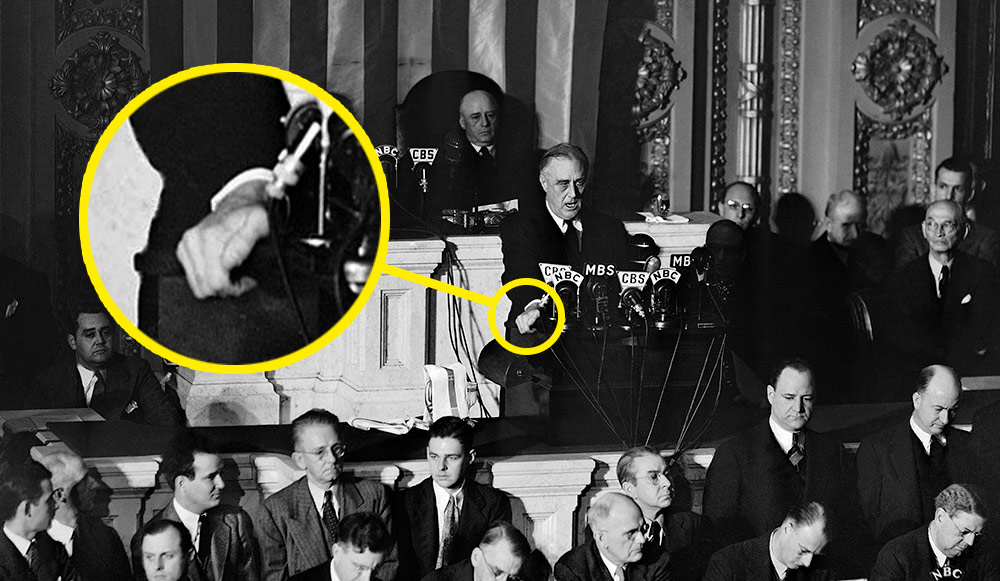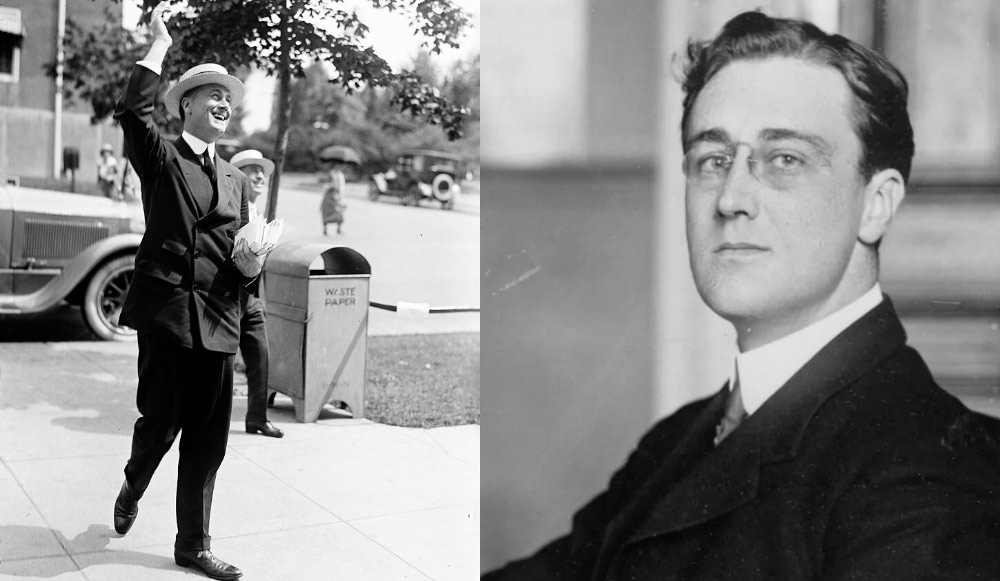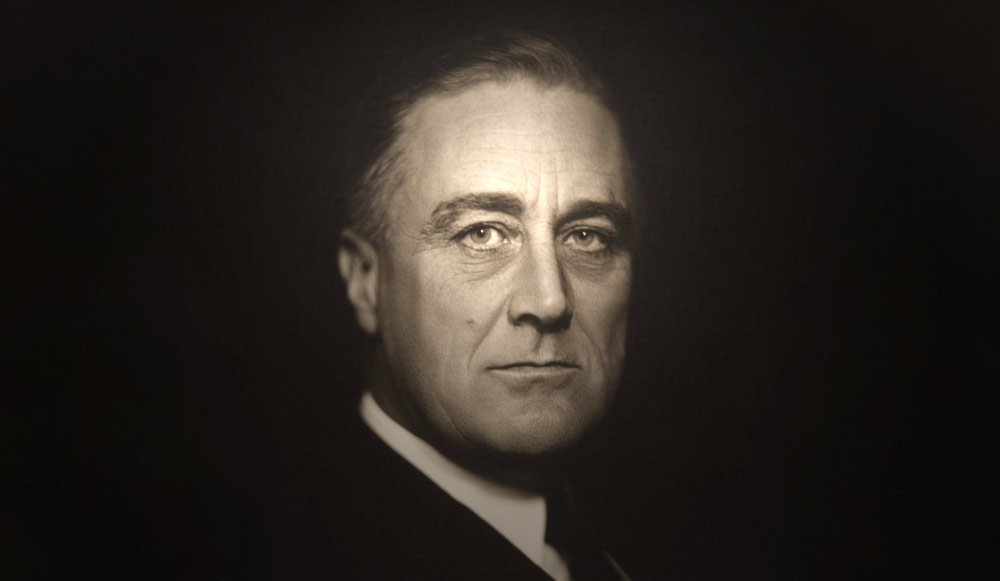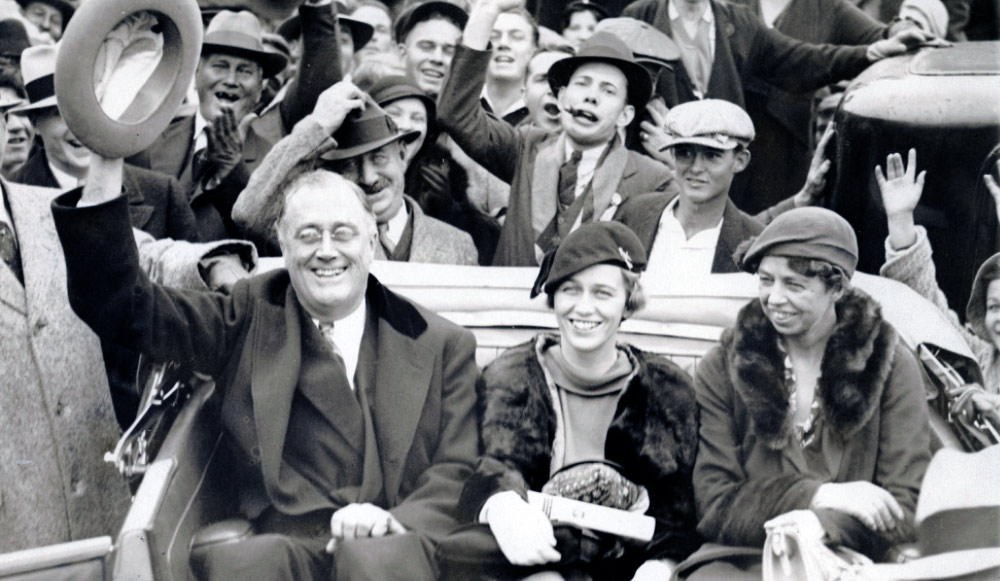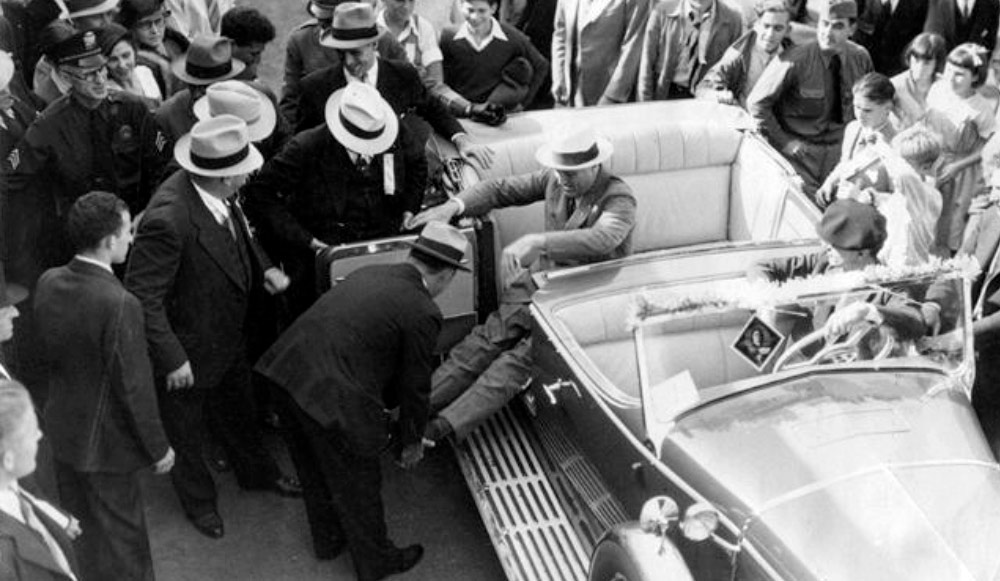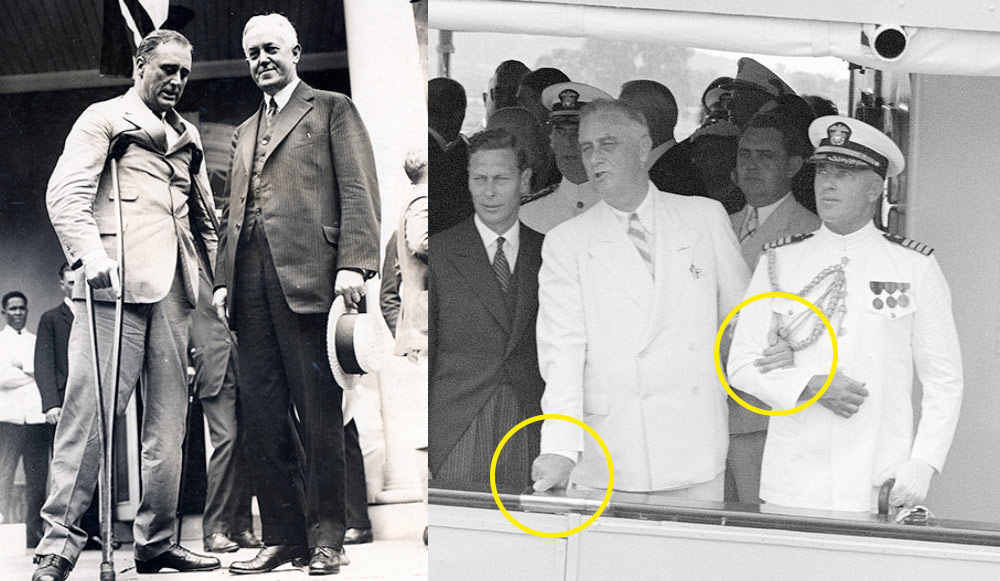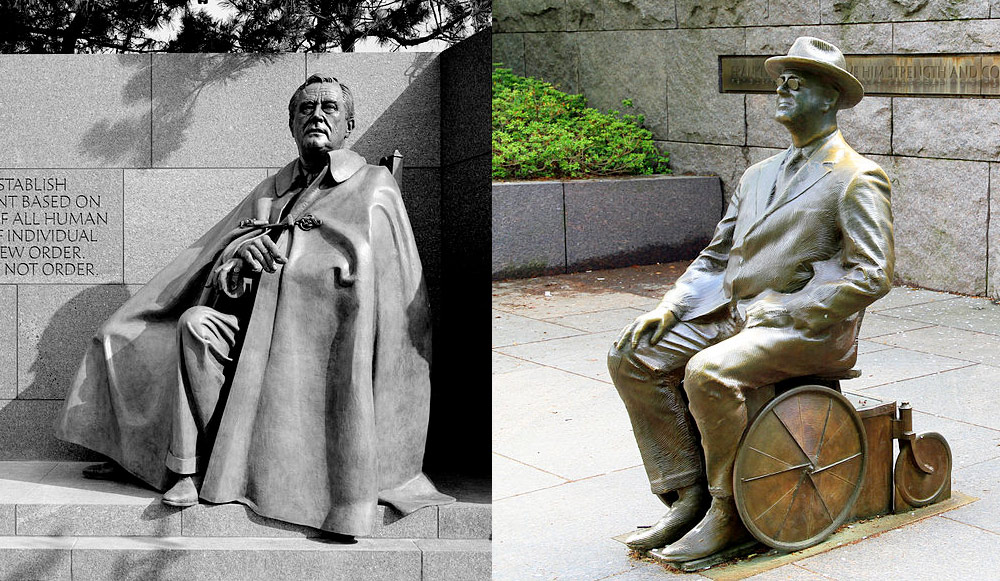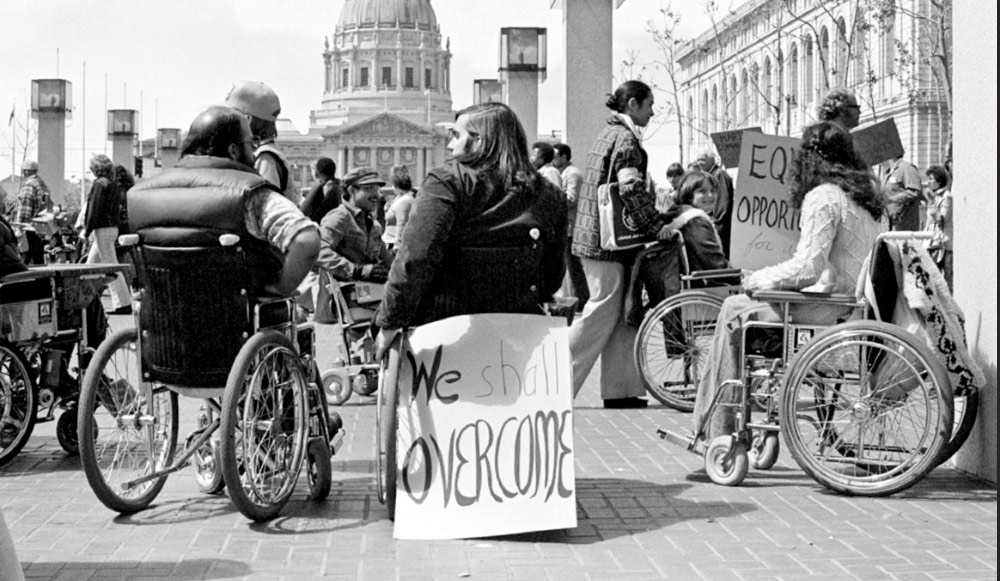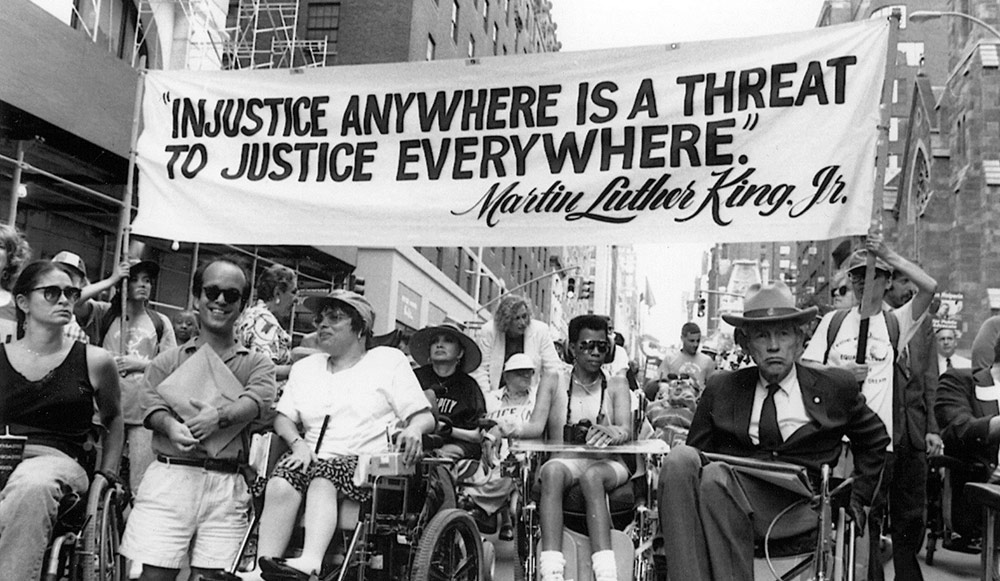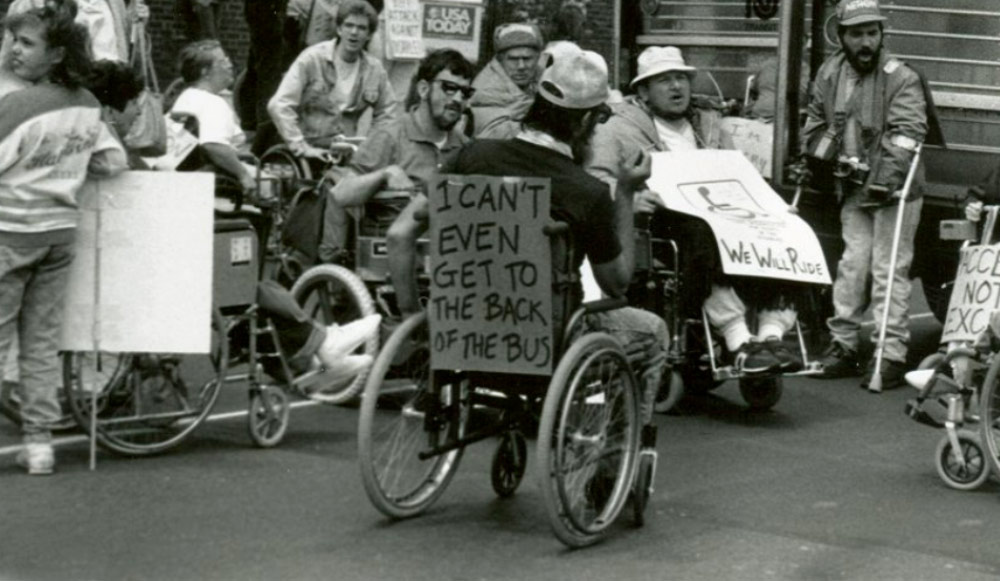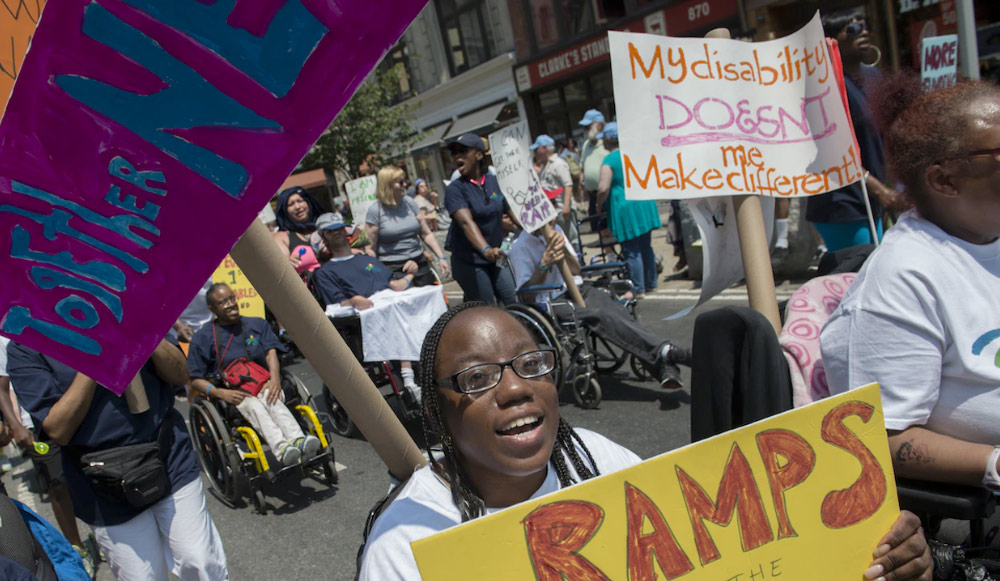After Pearl Harbor, 80% of Americans listened to FDR& #39;s "infamy speech" by radio.
But people at home did not know that he was gripping the podium to avoid falling down.
Today we need to talk about something we rarely mention: America& #39;s disabled president. #ADA30 History thread:
But people at home did not know that he was gripping the podium to avoid falling down.
Today we need to talk about something we rarely mention: America& #39;s disabled president. #ADA30 History thread:
As far as everyone knew, Franklin D. Roosevelt was a healthy man with no disabilities until age 39.
Then one day in 1921 while he was on vacation in the countryside, he just got sick. And nobody could figure out exactly what happened.
Then one day in 1921 while he was on vacation in the countryside, he just got sick. And nobody could figure out exactly what happened.
Doctors tried to solve the mystery of FDR& #39;s illness. Their best guess was polio but that may not have been right. Today some evidence suggests it may have been an obscure disease called GBS.
Either way, at age 39 FDR was functionally paralyzed from the waist down.
Either way, at age 39 FDR was functionally paralyzed from the waist down.
New Yorkers vaguely knew that FDR had some sort of illness when they elected him governor. But his campaign cultivated an image of gradual healing to make it look like he was getting better. He wasn& #39;t.
When he became president in 1932, Americans did not know how disabled he was.
When he became president in 1932, Americans did not know how disabled he was.
The White House was pretty successful at concealing the full extent of Roosevelt& #39;s disability from the public.
The Secret Service blocked journalists from taking photos of Roosevelt being wheeled into buildings to give speeches. There are only *5 surviving images* of his chair.
The Secret Service blocked journalists from taking photos of Roosevelt being wheeled into buildings to give speeches. There are only *5 surviving images* of his chair.
To make the White House more accessible to Roosevelt& #39;s wheelchair, they installed ramps. But outside of the White House, ramps were not the norm.
When he gave speeches elsewhere, he was sometimes carried up stairs or even fire escapes–carefully out of view of the press & public.
When he gave speeches elsewhere, he was sometimes carried up stairs or even fire escapes–carefully out of view of the press & public.
FDR& #39;s daughter told a gutting story of when her father had to give a speech in a building with a staircase too narrow to be carried up.
The most powerful man in the world had to drag himself up, step by step.
Imagine him crawling slowly. Afraid a photographer would catch him.
The most powerful man in the world had to drag himself up, step by step.
Imagine him crawling slowly. Afraid a photographer would catch him.
Roosevelt occasionally wore secret braces under his pants. When it was deemed important for the president to be seen standing, someone would quietly support him from behind.
During his 7 minute Pearl Harbor speech to Congress he fiercely gripped the podium with one hand.
During his 7 minute Pearl Harbor speech to Congress he fiercely gripped the podium with one hand.
Before he died while in office at just age 63, President Roosevelt founded the March of Dimes. Believing FDR had polio, his organization worked to eradicate it from the United States by funding vaccine work.
It was successful. Polio vanished from the US in 1979.
It was successful. Polio vanished from the US in 1979.
FDR& #39;s statue was originally going to cover up the fact that he was in a wheelchair. It merely portrayed him as sitting down.
But disability rights activists demanded a more truthful representation. Later, a second statue was added to more accurately show him using a wheelchair.
But disability rights activists demanded a more truthful representation. Later, a second statue was added to more accurately show him using a wheelchair.
President Roosevelt& #39;s story becoming America& #39;s first physically disabled president is partly inspirational.
But it& #39;s also a story of secrets, shame, fear, pain, and prejudice. A reminder that America was not built for people with disabilities.
At least not yet.
But it& #39;s also a story of secrets, shame, fear, pain, and prejudice. A reminder that America was not built for people with disabilities.
At least not yet.
Decades after America had its first physically disabled president, disability rights activists were determined to change things.
Inspired by the success of the Civil Rights Movement, they knew they had to make America accessible. So they created their own Civil Rights movement.
Inspired by the success of the Civil Rights Movement, they knew they had to make America accessible. So they created their own Civil Rights movement.
The Americans with Disabilities Act of 1990 moved America closer to its original promise of equality for all.
It criminalized discrimination against disabilities. And, importantly, it required American buildings that were open to the public to become more accessible to everyone.
It criminalized discrimination against disabilities. And, importantly, it required American buildings that were open to the public to become more accessible to everyone.
Not everyone wanted the Americans with Disabilities Act to pass. Some religious groups like the National Association of Evangelicals opposed it.
The conservative Chamber of Commerce also lobbied against #ADA because they didn& #39;t want to spend money to make buildings accessible.
The conservative Chamber of Commerce also lobbied against #ADA because they didn& #39;t want to spend money to make buildings accessible.
On March 12, 1990 disability rights activists left their wheelchairs and dragged themselves up Capitol Hill steps to demand the passage of the Americans with Disabilities Act.
Jennifer Keelan, an 8 year old girl with cerebral palsy declared: "I& #39;ll take all night if I have to."
Jennifer Keelan, an 8 year old girl with cerebral palsy declared: "I& #39;ll take all night if I have to."
On July 26 1990, the Americans with Disabilities Act became law. It had support from both parties: just 29 Republicans & 5 Democrats opposed it.
Probably the most important law of the George H.W. Bush presidency. Later, Bush himself benefited when he used a wheelchair. #ADA30
Probably the most important law of the George H.W. Bush presidency. Later, Bush himself benefited when he used a wheelchair. #ADA30
Other countries saw the Americans with Disabilities Act as a groundbreaking piece of legislation.
In 2012 the UN offered a new international treaty modeled after the #ADA. More than 150 countries around the world ratified the treaty. They wanted to follow America& #39;s lead.
In 2012 the UN offered a new international treaty modeled after the #ADA. More than 150 countries around the world ratified the treaty. They wanted to follow America& #39;s lead.
By the time the UN adopted the Convention on the Rights of Persons with Disabilities, American conservatives were skeptical.
Astonishingly, Senate Republicans refused to ratify it. They ignored their colleague Bob Dole in a wheelchair in the chamber, begging them to support it.
Astonishingly, Senate Republicans refused to ratify it. They ignored their colleague Bob Dole in a wheelchair in the chamber, begging them to support it.
Today we have several disabled members of Congress. Tammy Duckworth (D-IL) lost both legs when her helicopter was shot down in Iraq.
Sadly her colleague Dan Crenshaw (R-TX) recently said she "stands" for the destruction of America. That& #39;s deeply a ugly attack on a disabled vet.
Sadly her colleague Dan Crenshaw (R-TX) recently said she "stands" for the destruction of America. That& #39;s deeply a ugly attack on a disabled vet.
According to the CDC, 1 in 4 US adults have some kind of disability.
The Trump administration has proposed cutting funding for people with disabilities, emulating a tactic that Ronald Reagan pushed in the 1980s that some have called a "disability purge." https://www.usatoday.com/story/opinion/todaysdebate/2020/01/27/trump-administration-cuts-disability-benefits-among-cruelest-editorials-debates/4592737002/">https://www.usatoday.com/story/opi...
The Trump administration has proposed cutting funding for people with disabilities, emulating a tactic that Ronald Reagan pushed in the 1980s that some have called a "disability purge." https://www.usatoday.com/story/opinion/todaysdebate/2020/01/27/trump-administration-cuts-disability-benefits-among-cruelest-editorials-debates/4592737002/">https://www.usatoday.com/story/opi...
84 years after we elected a disabled president, we elected an unspeakably cruel man who makes fun of people with disabilities.
Now on the 30th #ADAanniversary today, Trump& #39;s opponent is a man who voted for the original cosponsors of the Americans with Disabilities Act: Joe Biden
Now on the 30th #ADAanniversary today, Trump& #39;s opponent is a man who voted for the original cosponsors of the Americans with Disabilities Act: Joe Biden
Biden& #39;s campaign has real, detailed policies to improve access & equality for Americans with disabilities.
Trump& #39;s campaign... doesn& #39;t even have a disability page. It complains about too many disabled people receiving aid.
Anyway, here& #39;s Biden& #39;s plan: https://joebiden.com/disabilities/ ">https://joebiden.com/disabilit...
Trump& #39;s campaign... doesn& #39;t even have a disability page. It complains about too many disabled people receiving aid.
Anyway, here& #39;s Biden& #39;s plan: https://joebiden.com/disabilities/ ">https://joebiden.com/disabilit...
Americans with disabilities have never had their freedom simply handed to them.
They have had to fight for it every step of the way. Even if those steps were taken in wheelchairs.
It& #39;s up to all of us to listen to them, have their backs, and build a more equitable society.
They have had to fight for it every step of the way. Even if those steps were taken in wheelchairs.
It& #39;s up to all of us to listen to them, have their backs, and build a more equitable society.
If you learned something new from this thread, or you did not know that today was the 30th anniversary of the Americans With Disabilities Act, please consider sharing it.
If you don& #39;t want to miss another one of my history threads, sign up for free here: https://arlen.substack.com/ ">https://arlen.substack.com/">...
If you don& #39;t want to miss another one of my history threads, sign up for free here: https://arlen.substack.com/ ">https://arlen.substack.com/">...
On the 30th anniv. of the Americans with Disabilities Act, here are great folks to follow on Twitter:
@RebeccaCokley- Director, @CAPDisability
@jkclegacy- Climbed Capitol Hill steps in 1990 as an 8 year old
@kendallybrown- Disabled healthcare advocate
@SenDuckworth-US Senator
@RebeccaCokley- Director, @CAPDisability
@jkclegacy- Climbed Capitol Hill steps in 1990 as an 8 year old
@kendallybrown- Disabled healthcare advocate
@SenDuckworth-US Senator

 Read on Twitter
Read on Twitter